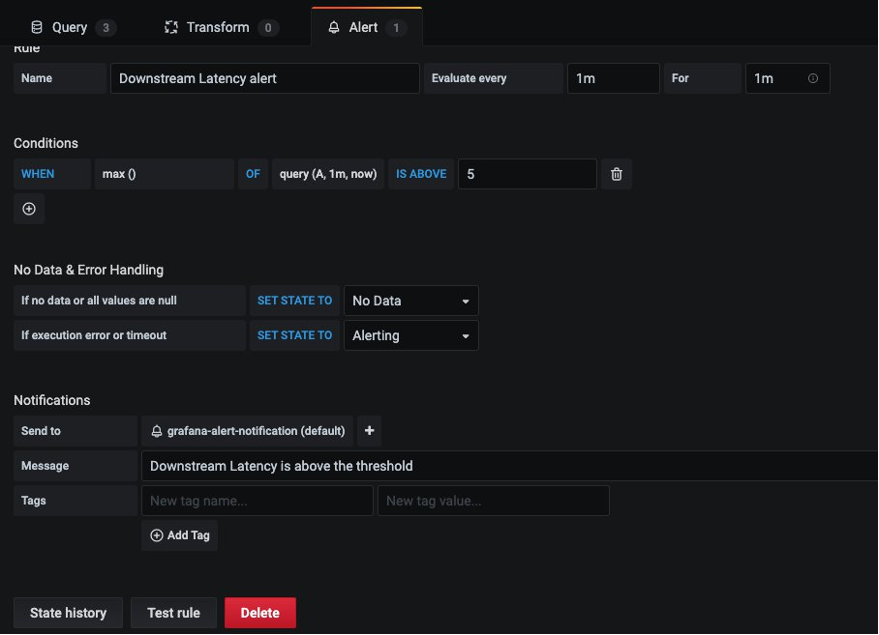Containers
Category: Amazon Elastic Kubernetes Service
A multi-cluster shared services architecture with Amazon EKS using Cilium ClusterMesh
Introduction Over the past couple of years, organizations have increased their pace of Kubernetes adoption. They want to be more agile so they can innovate and deliver new products to the market more efficiently. Among many of the early adopters of the Kubernetes platform, it was not uncommon to operate a single large Kubernetes cluster […]
Setting up a Bottlerocket managed node group on Amazon EKS with Terraform
Introduction Kubernetes, an open-source container management system, has surged in popularity and adoption in the past several years. From startups to large established enterprises across industry verticals are rapidly adopting it for their mission critical tasks and workloads. It is declarative, open source, and highly pluggable. In this blog, we will discuss what is, along […]
Amazon EKS 1.20 Released
The Amazon Elastic Kubernetes Service (Amazon EKS) team is pleased to announce support for Kubernetes 1.20. I had the privilege of serving on the upstream release team for this release from September to December of 2020 and am excited for Amazon EKS customers to experience “The Raddest Release” in all its glory. Kubernetes 1.20 Official […]
Migrating from self-managed Kubernetes to Amazon EKS? Here are some key considerations
Overview We talk to customers every day who are either planning a migration to Amazon Elastic Kubernetes Service (Amazon EKS) or who are in the middle of a migration to Amazon EKS. These customers may start with a self-managed Kubernetes deployment but as Kubernetes footprints scale up, it becomes quite cumbersome to manage a Kubernetes […]
Modernize Java and .NET applications remotely using AWS App2Container
Since the launch of AWS App2Container, customers have been asking for the ability to remotely manage the migrations of Java and .NET applications running on Windows or Linux hosts. Beginning with the version 1.2 of App2Container, users can accomplish containerization of their workloads without installing A2C software on the application servers. The remote execution feature […]
Planning Kubernetes Upgrades with Amazon EKS
In February, Amazon Elastic Kubernetes Service (Amazon EKS) released support for Kubernetes version 1.19. We announced this through the usual mechanisms with our What’s New post and updates in Amazon EKS documentation. After some conversations both internally and with our customers, we have decided to start regular AWS Containers blog posts on Amazon EKS Kubernetes […]
Monitoring your service mesh container environment using Amazon Managed Service for Prometheus
NOTICE: October 04, 2024 – This post no longer reflects the best guidance for configuring a service mesh with Amazon ECS and Amazon EKS, and its examples no longer work as shown. For workloads running on Amazon ECS, please refer to newer content on Amazon ECS Service Connect, and for workloads running on Amazon EKS, […]
Deploying managed P4d Instances in Amazon Elastic Kubernetes Service with NVIDIA GPUDirectRDMA
In March 2021, Amazon EKS announced support for Amazon EC2 P4d instances, enabling you to launch a fully managed EKS cluster based on the latest NVIDIA A100 GPUs. Amazon EC2 P4d instances are the next generation of GPU-based instances that provide the best performance for machine learning (ML) training and high performance computing (HPC) in […]
AWS Secrets Manager controller POC: an EKS operator for automatic rotation of secrets
In an earlier blog post, we showed you how to mount a secret from AWS Secrets Manager using mutating webhooks. If this secret changes when the pod is in running state, the pod can’t capture the change and continues to use the old secret value. One solution is to terminate the pod and then re-create it. […]
Integrate Amazon API Gateway with Amazon EKS
Since 2015, customers have been using Amazon API Gateway to provide scalable and secure entry points for their API services. As customers adopt Amazon Elastic Kubernetes Service (Amazon EKS) to orchestrate their services, they have asked us how they can use API Gateway to expose their microservices running in Kubernetes. This post shows you how […]








